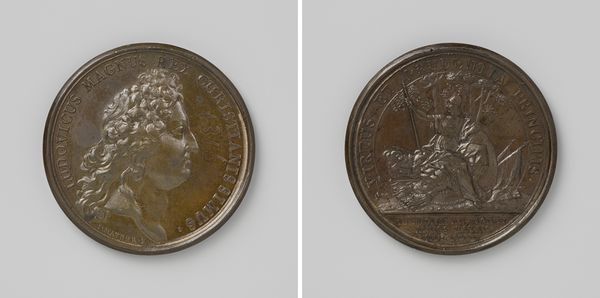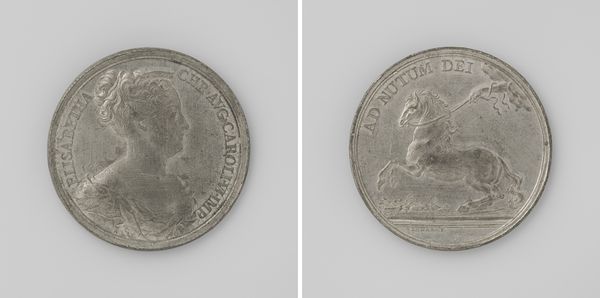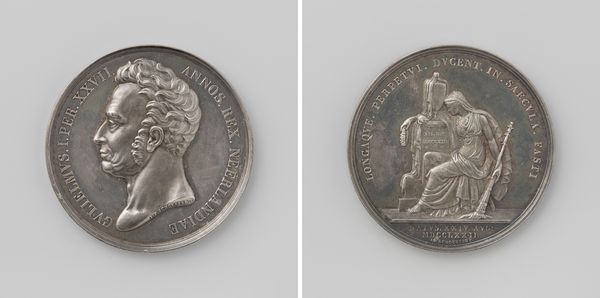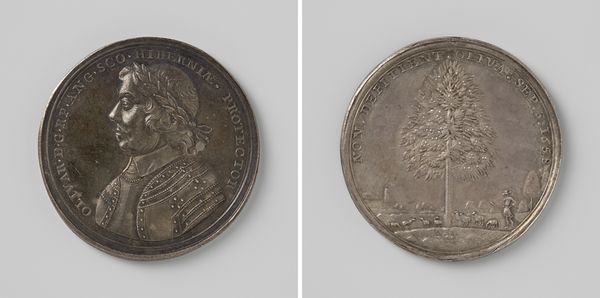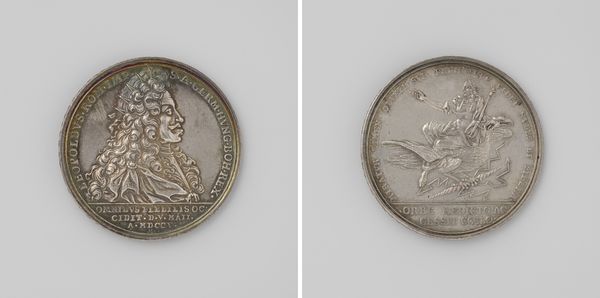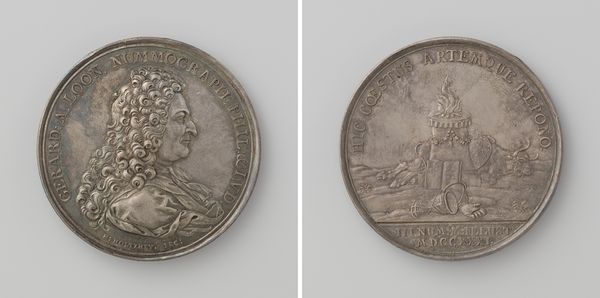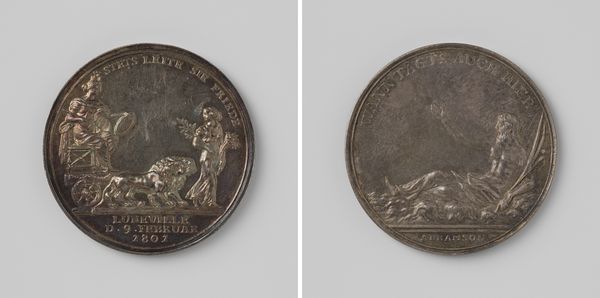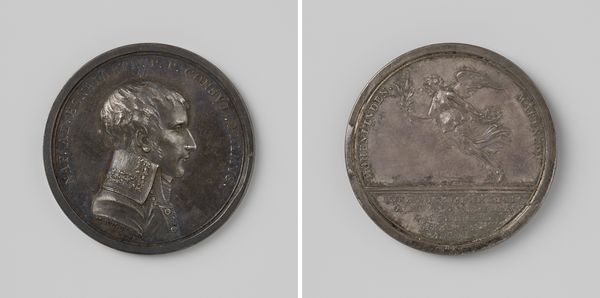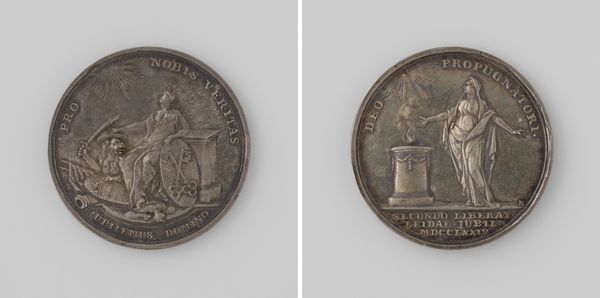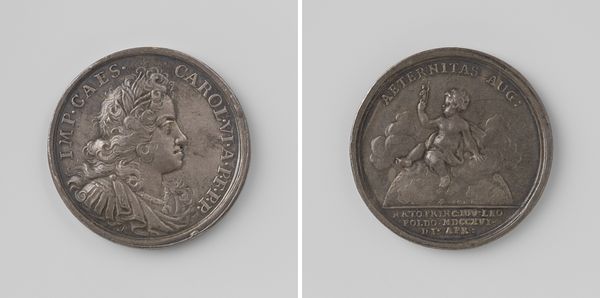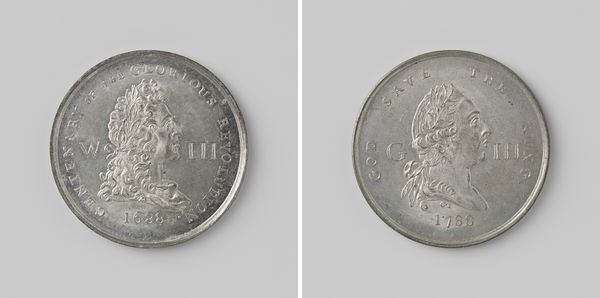
metal, sculpture, engraving
#
portrait
#
baroque
#
metal
#
sculpture
#
history-painting
#
engraving
Dimensions: diameter 4.4 cm, weight 28.37 gr
Copyright: Rijks Museum: Open Domain
Curator: Here we have a double-sided medal titled "Inname van Belgrado door Eugenius van Savoye 1717", commemorating the taking of Belgrade by Prince Eugene of Savoy in that same year. The artist, Georg Wilhelm Vestner, crafted it in metal using engraving techniques. Editor: Immediately striking is the almost ghostly pallor of the medal. It evokes a stark, solemn grandeur—fitting, given the subject matter. I'm drawn to the circular form; the lines of text which serve to frame the image feel almost like an embrace. Curator: Medals like these served as portable propaganda. They disseminated powerful images and messages, solidifying historical narratives and promoting a particular figure, in this case Prince Eugene, as a heroic leader. Editor: Yes, the imagery clearly glorifies military might and the stoicism of command. On one side, we see a bust of Eugene, a very baroque presentation with the full wig and slightly theatrical bearing, typical of portraits from the period that convey wealth and power. And then, on the reverse, Eugene astride a rearing horse surveying the field, literally elevated above the chaos of war. The choice to showcase both sides, front and back, serves the symmetry inherent in propaganda. Curator: Notice how even the horse seems to embody control. It isn't a wild, untamed beast; it is very much obeying its rider in this symbolic depiction of conquest. I find myself wondering how individuals during this era received such a direct depiction of events. What emotions might such a work have triggered? How would this event and its portrayal, influence beliefs, perhaps fueling patriotism or instilling the fear of opposition? Editor: That's the brilliance of an object like this. The repetitive form allows for reproduction and dissemination. Its physical being allows access in spaces that paintings simply could not inhabit. But you're correct. The symbol of the rearing horse—a potent visual motif used to depict authority, triumph, and an implied willingness to advance forward at all costs. This single artifact compresses layers of meaning into an easily reproducible format. Curator: It's interesting to consider how symbols persist across history, and how a singular artifact carries so much historical context and political intent. Editor: A small but undeniably potent piece, wouldn't you say? It clearly shows the intent and careful formal manipulation employed at that moment.
Comments
No comments
Be the first to comment and join the conversation on the ultimate creative platform.
